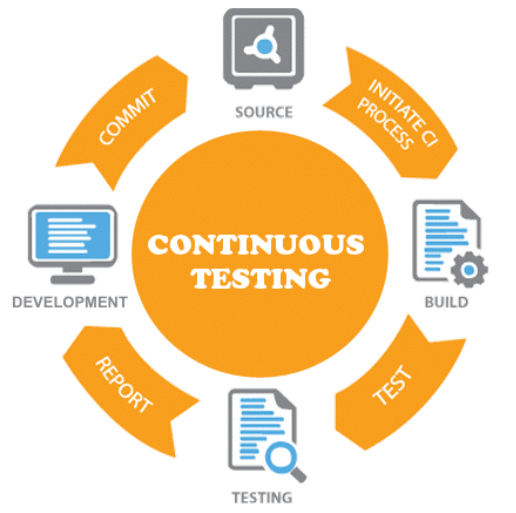Continuous testing is an approach to software testing that emphasizes the ongoing and automated execution of tests throughout the entire software development lifecycle(SDLC). It involves integrating testing into every stage of the development process, from coding and integration to deployment and beyond. Continuous testing aims to identify defects and issues early on, providing faster feedback and enabling quicker remediation.

The principles of continuous testing revolve around key concepts:
- Automation: Continuous testing heavily relies on test automation. Test cases are automated using frameworks and tools to simulate user interactions, validate functionality, and verify system behavior. Automation enables efficient and reliable execution of tests, even as the software evolves.
- Early Testing: Continuous testing begins as early as possible in the SDLC. By testing early, developers can detect and address issues before they become more complex and costly to fix. Early testing promotes a shift-left approach, where testing becomes an integral part of the development process.
- Comprehensive Test Coverage: Continuous testing strives to achieve comprehensive test coverage, ensuring that critical functionality and scenarios are thoroughly tested. This includes functional testing, integration testing, performance testing, security testing, and more. Comprehensive test coverage helps identify defects and vulnerabilities across different aspects of the software.
- Continuous Integration/Continuous Delivery (CI/CD) Integration: Continuous testing tightly integrates with CI/CD practices. Tests are seamlessly incorporated into the development pipeline and automatically triggered whenever there are code changes. This ensures thorough testing of new features or modifications before deployment.
Continuous testing offers several benefits:
- Early Defect Detection: Continuous testing enables early detection of defects and issues, allowing developers to address them promptly. By identifying and fixing issues early in the development process, the cost and effort associated with resolving them are significantly reduced.
- Faster Feedback and Iteration: Continuous testing provides prompt feedback on the quality of the software. Developers receive immediate results from automated tests, enabling them to iterate quickly and make necessary improvements. This iterative approach helps deliver high-quality software at a faster pace.
- Improved Software Quality: Continuous testing fosters a culture of quality throughout the development team. By continuously testing and validating the software, organizations can deliver more reliable and robust applications that meet customer expectations and requirements.
- Reduced Risks: Continuous testing helps mitigate risks associated with software defects and vulnerabilities. By identifying and addressing issues early on, the likelihood of encountering critical failures in production is minimized, reducing business risks and potential financial losses.
- Enhanced Collaboration: Continuous testing promotes collaboration between developers, testers, and other stakeholders. By integrating testing into the development process, teams can work together more effectively, share feedback, and address issues collaboratively, resulting in improved software quality.
In summary, continuous testing ensures that testing is an ongoing and integral part of the software development lifecycle. It brings numerous benefits, including early defect detection, faster feedback, improved software quality, reduced risks, and enhanced collaboration among team members.
If you have skills in PHP programming and you want to enhance your career in this field, a PHP certification from StudySection can help you reach your desired goals. Both beginner level and expert level PHP Certification Exams are offered by StudySection along with other programming certification exams.




